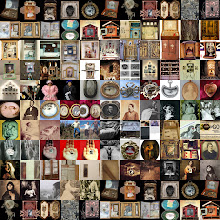The opening credits to the series mix images of rural Louisiana with sexual, violent and religious scenes, juxtaposing girls dancing seductively in some town bar, a gospel-induced trance in a church, a decaying fox, a snake jumping out to bite, naked contorting bodies... There is a strong presence of a christian world which clashes violently with the sexual and violent images, seeming to burst out in opposition- peaking at the end with the baptism scene. The intensity builds up in a battle between the animal, instinctive, sexual and violent impulses against the near mystical possessions.
Bataille would explain this as the constructed opposition between the ordered world of labour, where reason, control and faith inhabit, versus the unruly animal drives. These drives break in gasps against fixed norms and rules, which make them all the more erotic, seductive, irresistible and attractive. It is the prohibition (of violence, of sex) that makes the transgression so intense.
It is the fight between the human (civilised) and animal within us, between what we perceive to be our corporeal nature against our rational ego. As if our own skin betrayed the fact that we are animals, infused with an inherent inclination towards sex, violence, and all things perverse, forbidden and uncontrollable.
Our body also reminds us of death, seeing the fox decay we perceive our own corruptive flesh. And we identify the sexual and the violent with the world of death, that which is outside our realm, that which is chaotic and dark. According to Bataille this chaos is both horrifying and alluring, it is raw nature, which threatens the existence of the discontinuous self.
The vampire perfectly represents this 'other' realm, a corpse infused with violent supernatural powers, feared and desired. The bite is the peak of this tensions, promising both death and/or eternal existence, an existence outside life as we know it.


